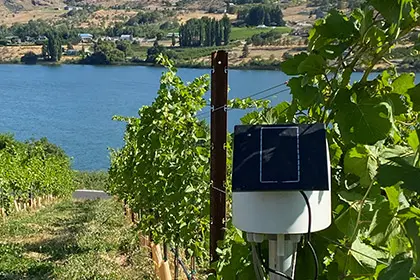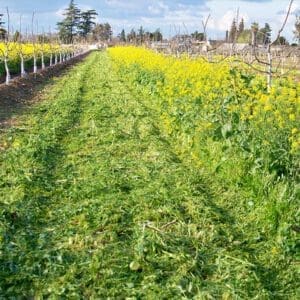
Five Steps Toward Farm Sustainability
Creating long-term sustainability within a farm operation can seem overwhelming. However, as with any large task, developing a plan with manageable components can be the best way to get started.
Gina Colfer, key account manager for Organics, Wilbur-Ellis Agribusiness, recently shared five steps that can help growers implement a plan that benefits people, the planet and profitability.
#1: MANAGE WATER EFFICIENTLY
With severe water shortages in the West and other areas across the United States, Colfer recommended making water preservation a key priority. “A good place to start is by increasing water-holding capacity within the soil,” she noted. “Do this by increasing organic matter in the soil, which will lead to better water-holding capability so you’re able to use less water to irrigate your crops.”
Also know the distribution uniformity in your irrigation system and gauge the system’s efficiency. “For example, do you have emitters that are putting out twice the amount of others?” Colfer asked. “To measure irrigation output, you can place buckets throughout the field to capture amounts in different areas. Next, look at your water’s infiltration rate to see if it’s soaking into the soil or running off with appropriate probe technology.”
#2: ADD ORGANIC MATTER
Colfer advised planting and harvesting cover crops at the right plant stage to create more soil biomass. “Don’t incorporate cover crops when they’re less than 24 inches high or you’ll burn more carbon than you’ve created,” she cautioned.
“Grow a nice three- to four-foot tall cover crop that still has adequate nitrogen in the leaf tissue and knock it down prior to flowering. This will deliver the most nitrogen possible into the soil along with additional biomass that will help sequester carbon to feed beneficial soil microbes.”</pAdding organic fertilizers (both dry and liquid), biologicals and biostimulants such as humic acid and seaweed all help build healthy organic matter that supports beneficial microbe growth, Colfer said.
#3: REDUCE TILLAGE
Several sustainability goals can be achieved by changing tillage practices throughout an operation. “Basically, look for ways to reduce time in the field with the tractor,” Colfer noted. “Identify where you can eliminate passes to lessen soil disturbance and reduce compaction as well as save fuel and operator time.”
In some operations such as orchards, farmers are adding compost to help prevent weed germination. “A thick layer of compost applied as mulch to the top of berms can stop weed growth, and nutrients in the compost wash into the soil with each rain as an extra benefit,” she explained.
 #4: ESTABLISH HABITAT BIODIVERSITY
#4: ESTABLISH HABITAT BIODIVERSITY
A diverse species of plants within a farm operation will provide an attractive home for beneficial insects and organisms to help manage crop pests and lure pollinators to fields.
“Hedgerows, though more difficult to establish, are a good choice for adding biodiversity,” Colfer said. “An easier solution is the use of insectary strip plantings, which attract beneficial insects and provide them with shelter and a nectar food source.”
A variety of plantings can be done in all types of operations, including corn and soybean fields. “Strips can be added every 40 rows or so, or beds can be planted around wells and point rows or in other areas that aren’t easily plantable for crops,” Colfer explained. “The important thing is to add plant diversity wherever you can.”
#5: INCORPORATE NATURAL ENERGY SOURCES
Reducing energy use and consumption is another step toward farm sustainability, Colfer explained. “Going forward, look at incorporating more natural resources as energy sources on the farm,” she said. “For example, try using more electricity, wind and solar sources to run farm wells.”
As more growers undertake sustainability measures, Colfer believes they need community and industry support to make their efforts financially feasible. “Enacting some of these measures can be costly, taking more time and resources,” she said. “Without broad support, small growers may have a difficult time sustaining these programs.”
For more information on how to implement sustainability measures on your farm, contact your Wilbur-Ellis representative.


 #4: ESTABLISH HABITAT BIODIVERSITY
#4: ESTABLISH HABITAT BIODIVERSITY